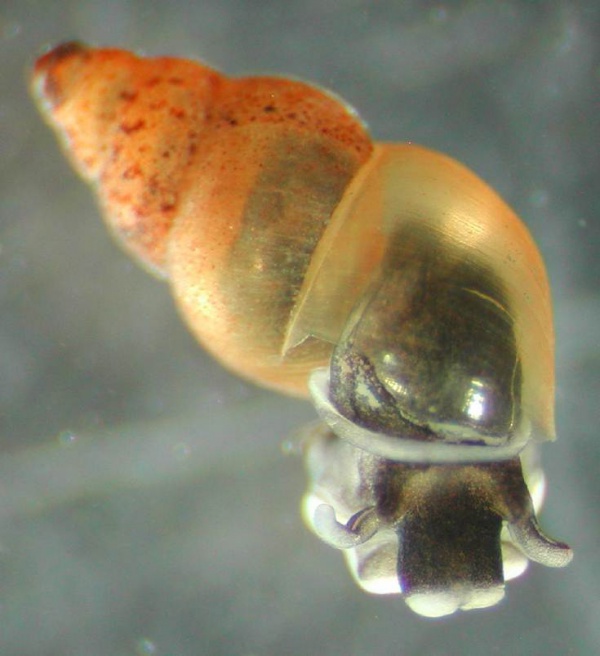Facts About New Zealand mud snail
The New Zealand mud snail, or *Potamopyrgus antipodarum*, is a diminutive freshwater snail native to New Zealand. This species, belonging to the Tateidae family, is characterized by its distinctive elongated shell with deep grooves and dextral (right-handed) coiling. Its shell exhibits a range of colors from gray and dark brown to lighter hues, typically attaining a height of about 5 mm, although some individuals can grow up to 12 mm. It possesses a thin, horn-like operculum that serves as a protective cover, and its oval-shaped aperture may feature various defensive structures such as keels and spines.
First described as *Amnicola antipodarum* in 1843, the New Zealand mud snail has since spread globally, emerging as a notorious invasive species. It has dispersed to Europe, Australia, Asia, and North America, often via human-mediated transportation.
In the United States, this mud snail was first identified in Idaho in 1987 and has subsequently invaded numerous water bodies, including the Great Lakes. Its rapid population growth threatens native species by competing for food resources. Lacking natural predators in the U.S., the snail can even survive passage through the digestive systems of fish and birds. To mitigate its spread, measures such as closing rivers to fishing and recommending gear decontamination have been implemented.
Ecologically, the New Zealand mud snail is highly adaptable. It flourishes in silted, disturbed watersheds and nutrient-rich environments, consuming plant and animal detritus, algae, sediments, and diatoms. Remarkably, it reproduces asexually (parthenogenetically), giving birth to live young (ovoviviparously). This reproductive strategy renders it a valuable model for studying the advantages and disadvantages of sexual reproduction.
In its native habitat, the snail's population is regulated by various parasites, such as trematodes. However, in new environments where these parasites are absent, the snail can become a significant pest. It can travel upstream via water currents and exhibits impressive resilience, surviving predation by fish and birds. Additionally, it can detect and respond to chemical signals, including predator cues, enhancing its survival.
Through a comprehensive understanding of its biology and behavior, more effective strategies can be devised to manage and control the spread of this invasive snail species.

 Mexico
Mexico